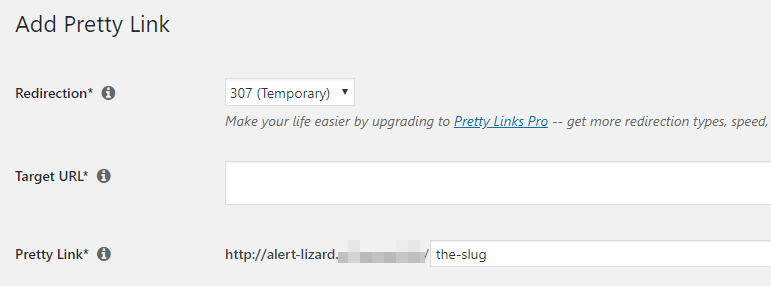Mais 3 erros de encurtamento de links (e como você pode evitá-los)

Conteúdo
There are a lot of reasons you’d want to shorten your links. It makes them easier on the eyes, for example, and it can be great for marketing purposes. The problem is that there are some pitfalls you need to avoid when it comes to shortening links, especially if you want to get the most out of the process.
We’ve already talked about some of the erros mais comuns de encurtamento de links As pessoas cometem erros, como criar links para conteúdo de baixa qualidade e usar texto âncora de forma inadequada. No entanto, ainda temos um pouco de trabalho pela frente, para que você possa evitar erros e acabar com uma estratégia de links mais forte.
In this article, we’re going to briefly review why link shortening can benefit you. Then we’ll introduce you to three (more) link shortening mistakes you need to avoid, and talk about how to do that. Let’s jump right in!
Por que o encurtamento de links é uma estratégia vital
O encurtamento de links é um processo em que você pega um link longo e desorganizado e o transforma em algo mais curto e mais fácil de gerenciar. Por exemplo, imagine que uma de suas postagens no blog tenha este URL:
yourwebsite.com/blog/2018/05/02/postid=4534523
Esse link é longo, confuso e não informa ao leitor nada sobre o conteúdo para o qual ele leva. Com um encurtador de links, você poderia pegar esse URL e substituí-lo por algo como isto:
yourwebsite.com/article-name
Se você usar uma ferramenta profissional de encurtamento de links, you can use any text you want for your shortened links. However, link shortening is not just for cosmetic purposes. ‘Pretty’ links can also help to melhorar suas taxas de cliques and your affiliate marketing strategy. You can even use shortened links to reinforce your branding, so they’re a great addition to almost any website. That is, at least if you tackle link shortening the ‘right’ way.
3 (mais) erros de encurtamento de links que você precisa evitar
If you haven’t read our previous piece on erros comuns de encurtamento de links, we’d suggest checking it out after you’re done with this one. That way, you’ll know everything you need to avoid when working on your links.
1. Não incluir sua marca em seus links
First up, let’s talk about branding. Ideally, all of your shortened URLs will include your site’s brand within them. Otherwise, you’re missing out on a key marketing opportunity, and visitors might even think that you’re using links from another site.
Além disso, o uso de sua marca para links externos mantém tudo consistente em todo o site. Com Pretty Links, your brand becomes part of each shortened link you create automatically. All you have to do is choose what comes after it, which is what we call the ‘slug’:

We’ll talk more about URL slugs shortly. For now, let’s move on to redirects.
2. Uso do tipo de redirecionamento errado
One common misconception behind link shortening is that you’re transforming one URL into another. However, you aren’t actually erasing the original link. Instead, what you’re doing is creating a new link and pointing it towards the original one, using something called a redirect.
Como você deve saber, há vários tipos de redirecionamentos. Quando se trata de encurtamento de links, os tipos aos quais você tem acesso dependem da ferramenta que você usa. Por exemplo, com o Pretty Links, você pode usar oito tipos de redirecionamentos.
However, in most cases, you’ll want to stick with one of two options, which are:
- 301 redirecionamento. This is what’s called a ‘permanent’ redirect, since it tells search engines to pass on the ‘link juice’ from one URL to another. You should only use this redirect if you’re sure the target URL won’t change later on.
- 307 redirecionamento. This is known as a ‘temporary’ redirect, and is always safe to use. It doesn’t pass on any link juice, since the target URL might change.
Generally speaking, you’ll want to use 307 redirects for external links, since those might change at some point and are outside of your control. 301 redirects, on the other hand, are perfect for internal shortened links.
Para tornar essa tarefa mais simples, o Pretty Links permite que você escolha o tipo de redirecionamento em uma lista sempre que encurtar um novo URL:

Basta verificar novamente em qual categoria o URL de destino se enquadra e escolher um redirecionamento com base em suas características.
3. Configuração de slugs genéricos
Last but not least, it’s time to talk about slugs. A slug is the section of a URL that identifies a particular page. For example, in the URL yourwebsite.com/page-oneo slug é "page-one":

Ao encurtar um link usando as ferramentas adequadas, você pode escolher um slug para o URL gerado. Essa é a oportunidade ideal para definir um nome que visualize o conteúdo da página de destino e que tenha uma boa aparência para os visitantes.
However, what a lot of people do is use overly generic slugs. Imagine, for example, that you’ve written a comparison article on the best running shoes you can buy. Here are two shortened link options you might use:
- yourwebsite.com/shoes
- yourwebsite.com/best-running-shoes-2018
The second option is superior. Although it’s longer, it tells visitors exactly what to expect. Plus, it even includes a ‘timestamp’, so people can see that the content is fresh (encouraging them to click on it). No matter what the content is about, what’s important is to focus on coming up with a slug that’s descriptive, yet not too long.
Conclusão
Muitas pessoas usam encurtadores de links sem pensar muito sobre como they’re using them. Shortened links can benefit your website in a lot of ways, from reinforcing your brand to gathering better data about your affiliate linking strategy. However, if you don’t implement link shortening carefully, you won’t see the results you’re hoping for.
We’ve already talked about some of the erros de encurtamento de links que você precisa evitar. Agora, aqui estão mais três técnicas que você deve ter em mente para garantir que sua estratégia de links esteja correta:
- Inclua sua marca em seus links.
- Use o tipo correto de redirecionamento para cada URL.
- Evite usar lesmas genéricas.
Você tem alguma dúvida sobre como encurtar seus links corretamente? Pergunte-nos na seção de comentários abaixo!